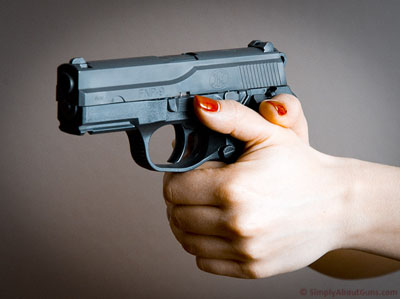
Proper Gun Grip
A proper gun grip is essential! Your gun must become an extension of your arm and your hand. Gun grip effects your sighting (aim), your balance, your ability to work the hammer (on a revolver) to pull the trigger, to work a safety mechanism (if your gun has one), to absorb much of the recoil with as little discomfort as possible and your safety. Think about it this way, your gun replaces the finger in pointing (or aiming) at an object. There are some slight differences between the proper grip for a revolver and that of a semiautomatic gun.
For self-defense, a two-handed gun grip is always better. It is however recommended to get comfortable gripping and shooting your gun one handed as well, in both dominant and non-dominant hands. This is in the event you are somehow disabled and forced to shoot one-handed. So getting comfortable and proficient with a proper gun grip in both hands is necessary.
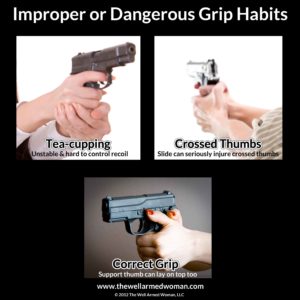
Finding the proper grip
As stated above, in self-defense situations the preferred and proper gun grip is a two-handed grip.
Because two hands are involved, each hand has its own place and function in the grip. The support hand stabilizes the handgun and makes the shooter more accurate. You want a firm and solid gun grip for maximum control and accuracy. Don’t be shy and offer your gun a limp handshake! Grab on and hold firmly!
The higher the hand on the grip (with the flesh of the web of your hand pressed up snug toward the top of the grip) and the straighter the alignment of the barrel of your gun and your arm, the better a “shock absorber” your hand and arm are. You can simply check to see if you have proper gun grip and straight alignment. As you look down over your arm – it should be a straight line from the butt of your gun (in the web between your thumb and index finger) that runs up to your elbow. You should not see any break in the wrist. You will be better able to handle recoil as your entire arm acts as a shock absorber. This also means you will have much better control over muzzle jump (the tendency for the barrel to rise quickly upon firing).
Why does a proper grip matter?
If you have a break in this imaginary line, it is likely that the grip of the gun is too large for your hand. To accommodate a grip that is too large, you are forced to “adjust” the grip by moving your hand forward and around the grip, displacing the butt of the gun from the center of the webbed area between your thumb and index finger. Once you are off center, the shock absorber effect is greatly diminished as well as the quality of your grip. Another thing to consider is that if you are in the stressful situation of dealing with an attacker – you likely do not have the time or the mental capabilities to make awkward adjustments to your grip. When you grab the grip of your gun, it should place your hand in the perfect grip, one that is ready to raise the gun, aim, and fire.
ANYTIME YOU GRIP YOUR GUN – YOUR TRIGGER FINGER MUST REMAIN STRAIGHT AND NOT ENTER THE TRIGGER GUARD. EXTENDED INDEX FINGER SHOULD LIE ALONG THE SIDE OF THE FRAME.
Proper Gun Grip For The Revolver
The proper gun grip for the revolver (whether for one handed or two handed grip) starts with placing the gun in your dominant hand with it pressed all the way into the web of your hand, high on the backstrap. The top of the barrel of the gun should be in line with your forearm which should be in line with the “V” created by your thumb and index finger. Your trigger finger lies flat along the frame of the gun and does not enter the trigger guard.
When gripping a Single Action revolver, in which you must cock the hammer to chamber each round, the proper grip on your gun has your thumb placed high on the side of the frame so it is free and has easy access to cock the hammer.
A Double Action revolver which can have either no external hammer to cock or the cocking of the hammer is not required, the grip is the same, but the proper gun grip has the thumb is dropped down to grasp the handle to provide maximum leverage for the longer, harder trigger pull of a double action revolver.
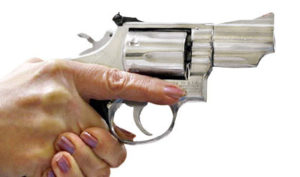
For a proper two-handed grip, the second, non-dominant hand simply will wrap firmly around the shooting hand. This steadies the grip, allows for proper trigger pull and helps to absorb recoil and prepare for another round. Place the thumb of the supporting hand on top of the strong hand thumb. In the case of a single action revolver, be used to pull the hammer back.
Proper Gun Grip For The Semi-automatic Gun
When a semiautomatic gun is fired, the slide will slide backward and forward with great power and speed. This can cause injury to your hand. Semiautomatic guns are designed to provide a shelf or hood that will keep your hand from crossing into this area. It is here that the proper gun grip for the semiautomatic gun is.
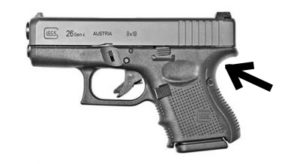
Again, the higher the hand on the grip and the straighter the alignment of the barrel of your gun and your arm, the better a “shock absorber” your hand and arm are and indicates a proper grip on your gun. This means you will have much better control over muzzle jump (the tendency for the barrel to rise quickly upon firing) and be better able you are to handle recoil. When gripping your semiautomatic pistol, you should see your flesh wrinkle some behind the backstrap and under the shelf or hood.
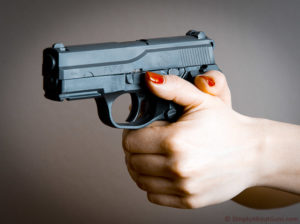
Photo courtesy of Simply About Guns
The proper gun grip for the semiautomatic is shown above. Place the gun high into the “V” created between your thumb and index finger and firmly pressed into the web of your hand. Both thumbs on the same side. (left side of the gun if you are right-handed). Your thumbs are high and pointing forward to provide added grip strength and your support hand thumb lies along the side below the slide action and pointing forward. Place your trigger finger flat along the frame of the gun so it does not enter the trigger guard until you are on target and ready to shoot.
A Proper Grip on your Gun Creates Stability for Shooting
With a firm and proper grip on your gun, you extend your arms to a firing position. You will apply more pressure or squeeze with your non-dominant hand (push) as your strong hand must not be too tight that it inhibits the task of your trigger finger. As you practice, you will need to experiment with these two pressures to find the right amount of pressure that works best for you.
Your gun will always be moving to one degree or another. No one, not even the best shooters can hold a gun perfectly still while they are shooting. A good strong proper grip and proper sight alignment will have the gun lined up on the target. Keep it in that zone and smoothly squeeze the trigger.
Here is a great video by Shannon Smith
Click Here For Trigger Pull Technique For The Woman Shooter
Continue Learning How To Shoot A gun here: Making The Decision: Part 4 – How Do I Use A Gun?
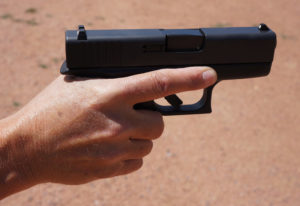
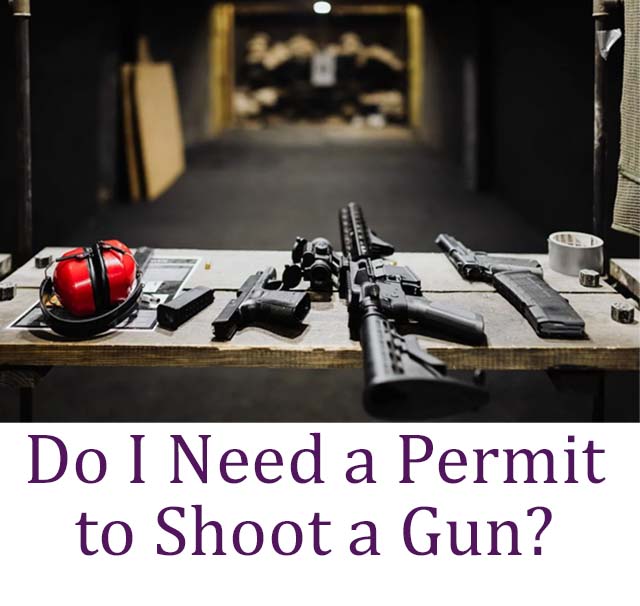
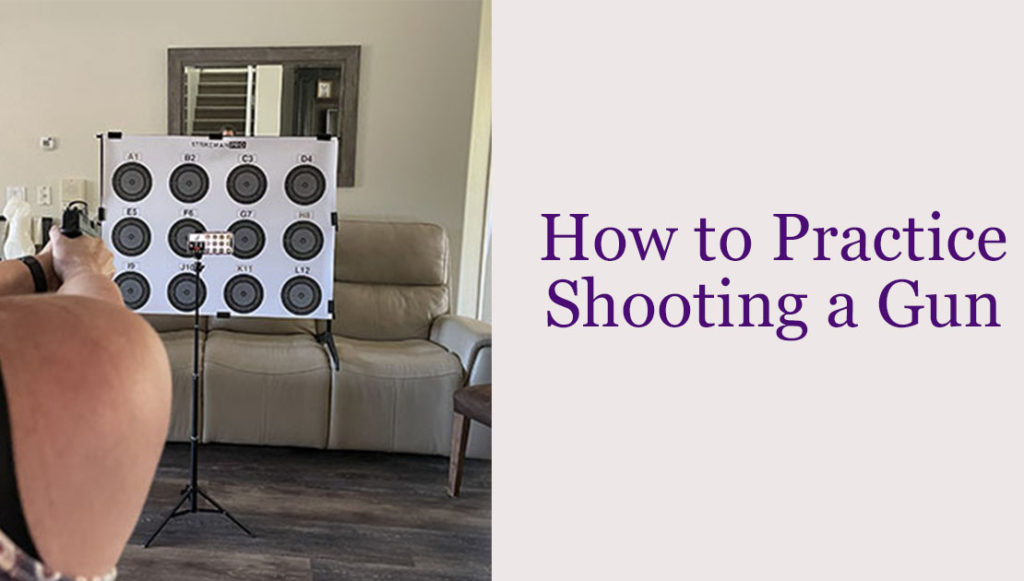
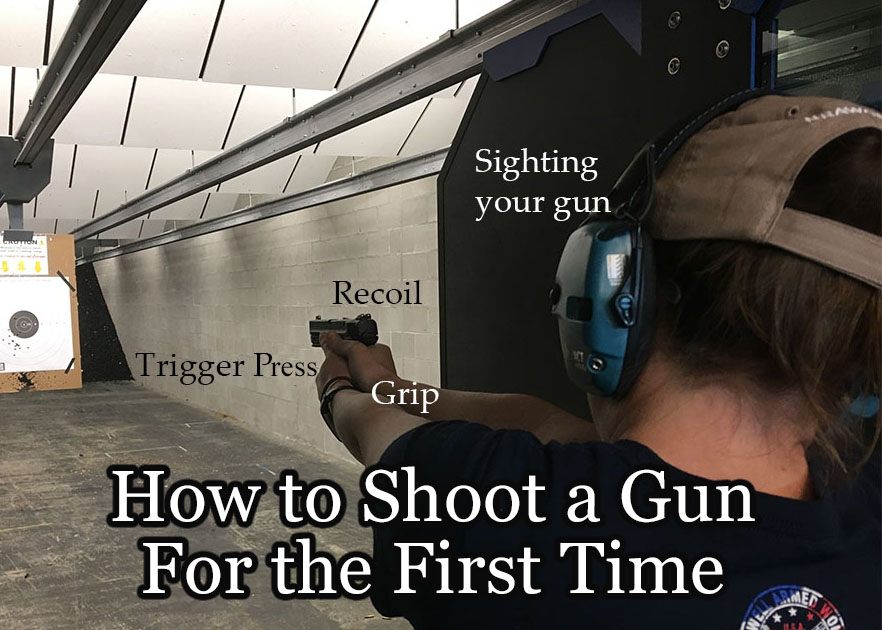
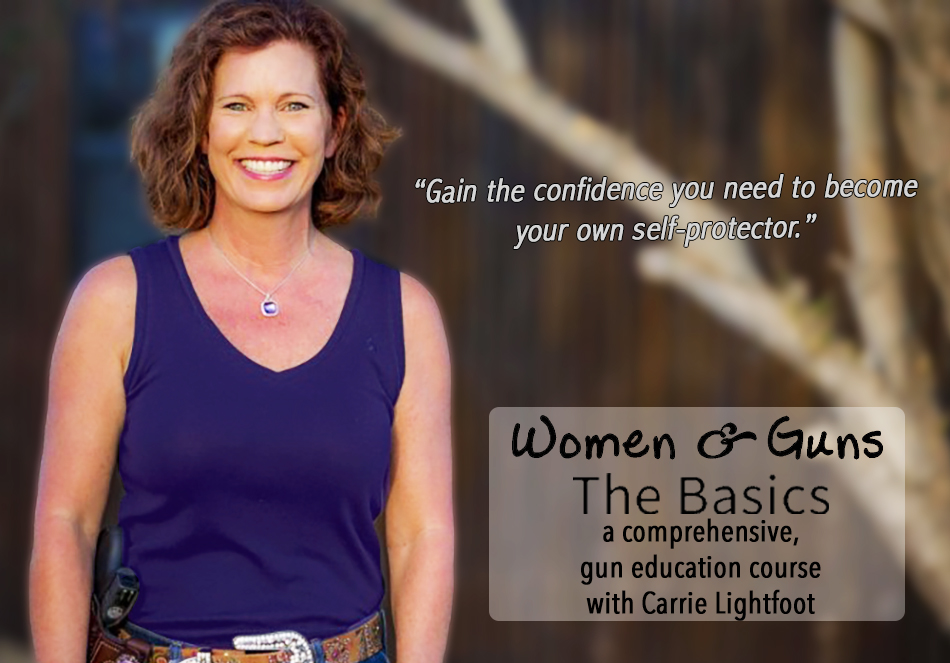
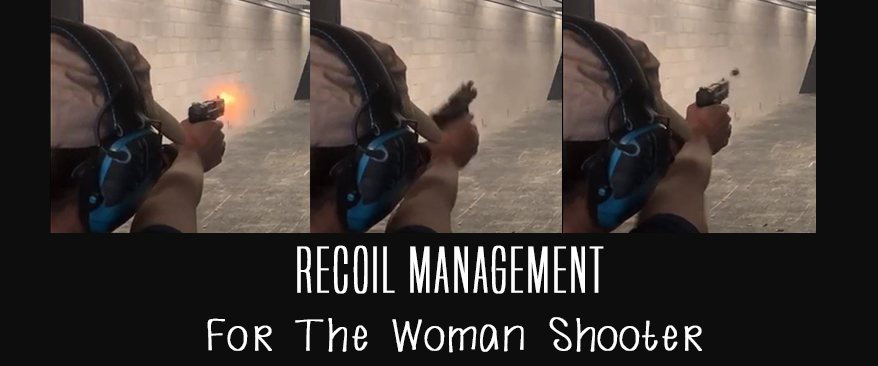
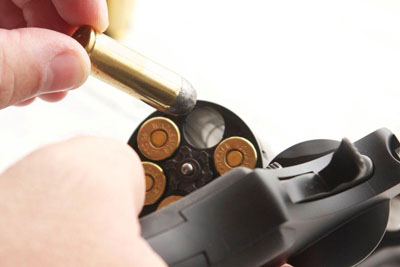
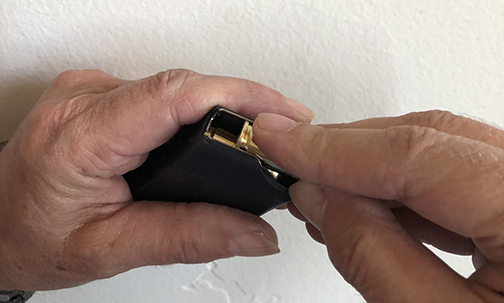
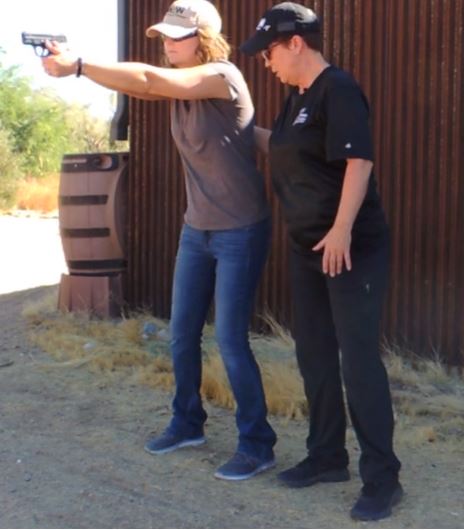
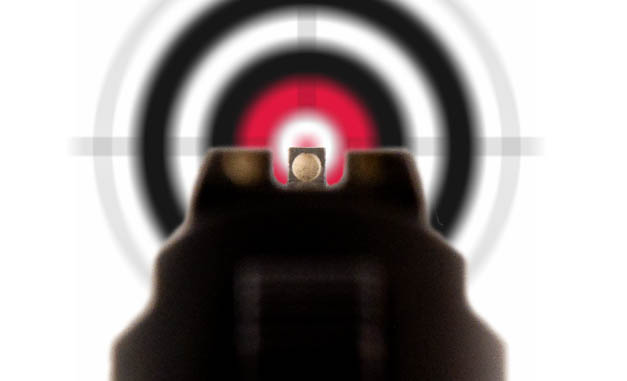
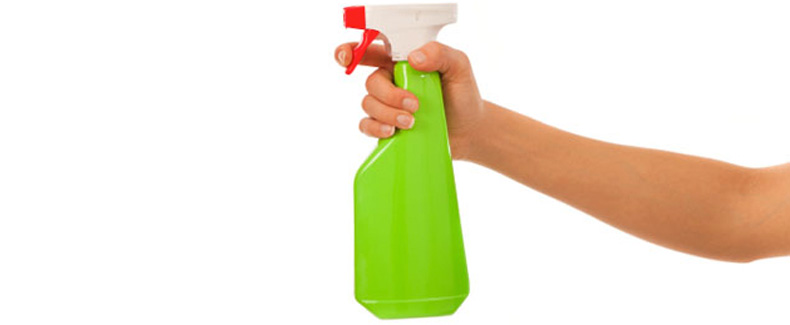
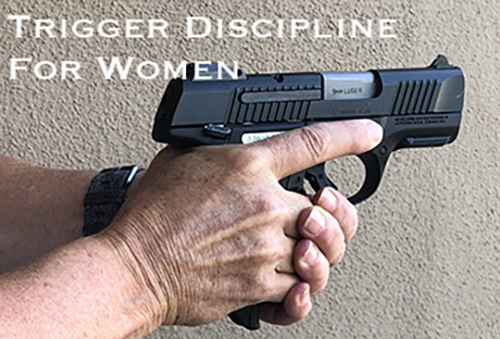
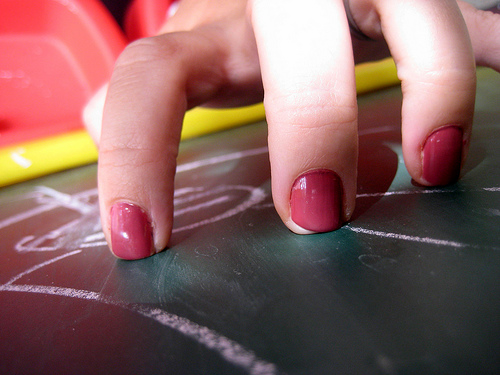
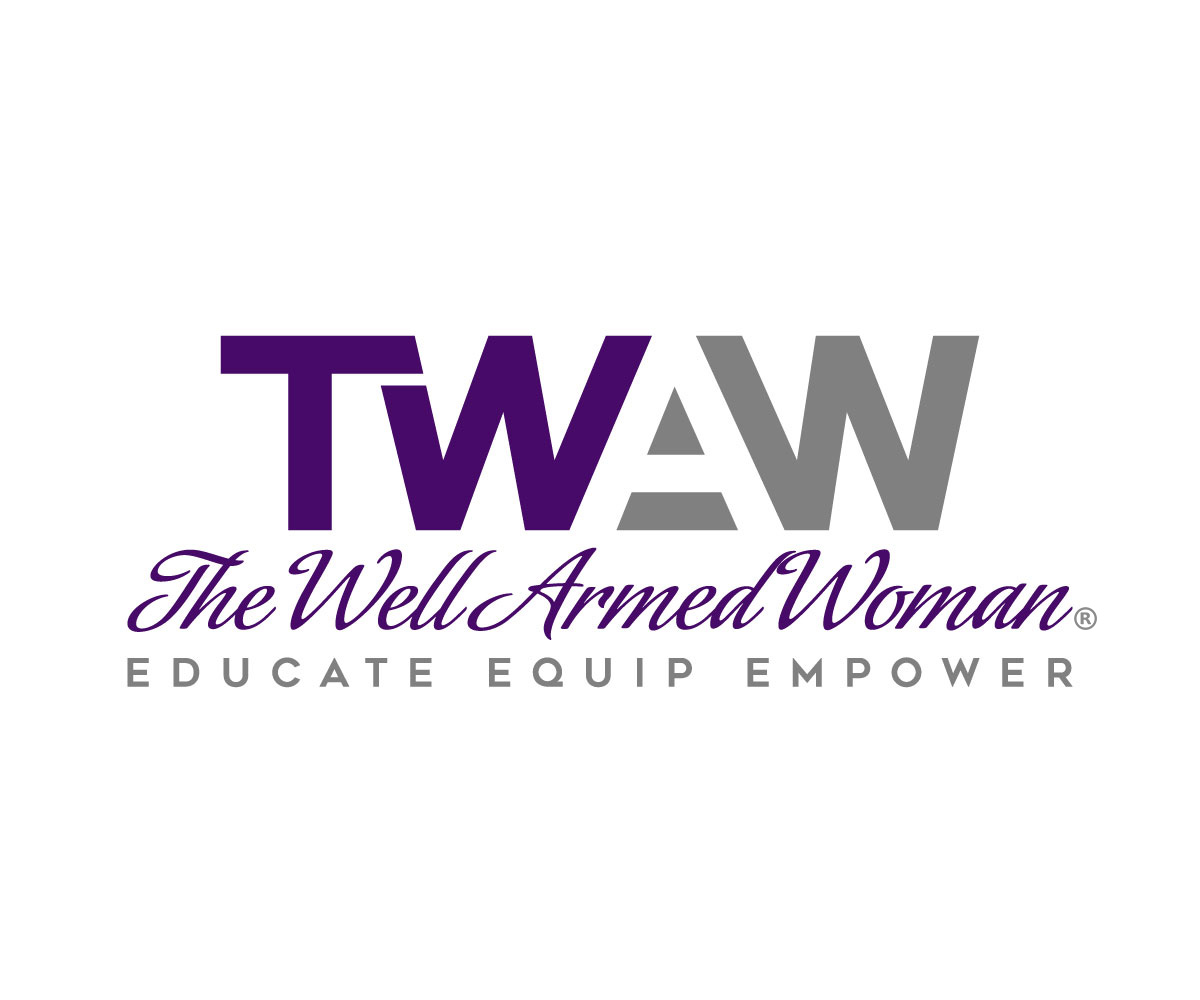
Hi Carrie, this is a great resource for proper grips. My wife and I would like your thoughts about grips suitable for sweaty palms.
So glad The Well Armed Woman is helpful to you!! You can have (or do yourself) your grips stippled which will create a rougher, grittier grip that will help with slippery, sweaty hands.There are some videos on YouTube that can show you how. There are also products you can tape on, or slip on over your grip for the same effect. I know Talon makes some. I hope this helps 🙂
Would the grip change for small hands? My hands are the size of an 8-10 year old. I have to buy kids winter gloves.. So most of the bigger guns don’t work for me either,
Hi Susan,
Ideally – you would find a gun with small grips, such as Walthers have. You may need to make adjustments to your grip when manipulating controls, but the overall grip technique stays the same to shoot. I have this same problem – the grip on the gun you shoot is the single most important thing so, finding one/shooting one that allows for you to wrap the grip as much as possible is key.
It’s great to learn that you can absorb recoil from shooting a gun by putting your hand higher up when you grip the firearm. My wife is wanting to learn how to shoot a gun and she was wondering how she can shoot one without a lot of recoil. I’ll be sure to tell her to hold the gun higher up on the grip to reduce recoil.
Thanks for mentioning that trying to adjust hand positioning on a grip that is too large will diminish the effect of the shock absorber. My husband wants me to get into recreational shooting with him, but I have tiny hands so it’s difficult to find a good grip on the guns he has. I’ll have to look for a good new grip online.
Hi Shayla,
Take your husband to a range that rents firearms and test their offerings. Often a range will also have a sales counter so you can try holding a number of guns before shooting. My wife tested 15 guns before she found the one she was satisfied with, and it was 100% her operation, so we knew it was well suited to her.
My family just moved to an area known for crime, so I want to learn to use a handgun for self defense if anything bad happens. Your article had some great tips for how to handle a gun, and I liked how you said if I use a semi-automatic gun, I should make sure my grip is under the slide in the shelf or hood that will keep my hand from crossing into the slide area. Thanks; I’ll keep this in mind when trying to properly handle a gun for defense purposes.
Hi Sarah,I am definitely no expert, but your support hand should account for more of your grip (60/40), so make sure your support hand is about 60% of the pressure/support which will help with controlling the gun during the recoil. Someone with greater knowledge please correct me.
I am a lefty and according to posts, and instructor, using proper grip but both wrists, particularly right wrist are very painful after target practice. What can I do?
Hi Linda, I am not sure I have heard this specifically to left handed shooters but have you tried some wrist strengthening exercises? Another possibility is that perhaps the firearm you are shooting is too heavy or of a caliber that produces more recoil than you can physically handle comfortably.
Hi Linda,
Double check your grip with another instructor and if both agree that you’re grip is good, you can try reducing the intensity of your session. Shoot less rounds but go more often. This should give you the practice you need without hurting you and turning you off to it.
If you are still experiencing the problem, you may also want to test slower ammunition, if available, or a slightly heavier firearm, which will mitigate some of the recoil.
Great information! Always so much to learn and glad this resource is here for us to work from. Thanks!
Great article! This will be a silly question, but are there any tips on how to keep your trigger hand on the fun during recoil? My husband noticed I was using too much of my trigger finger to fire (therefore causing my nail to cut into my other hand), and after fixing that I’m having a hard time keeping that hand on the gun during recoil. I know this is bad, and am looking to fix it!
There are no silly questions Sarah! Ever 🙂 Your strong hand, really has one job to do – press the trigger. If you grip too tightly with your strong hand, it “tightens” and effects your trigger finger. Yes, it is gripping and holding on to the gun but your non-dominant hand is key. Your non-dominant hand should wrap the grip, with the the index finger up against the bottom of the trigger guard and lay over your dominant hand fingers. You want to squeeze your non-dominant hand “side to side” (squeezing the grip and your fingers in the middle of them) This pressure should keep the gun firmly in your grip as well as allow your trigger finger the flexibility to do its job. I hope this helps!!
Thank you so much for your continuing education to better educate me and help me to be more confident. It is much appreciated. You all rock.